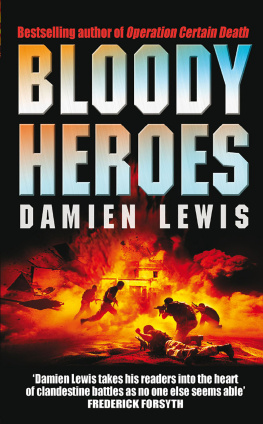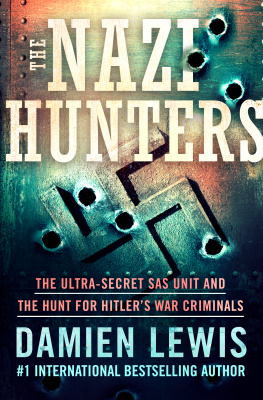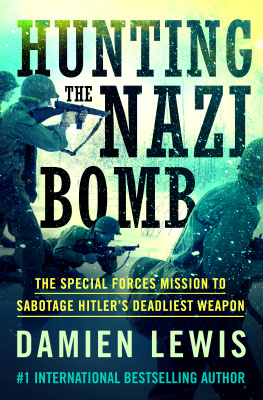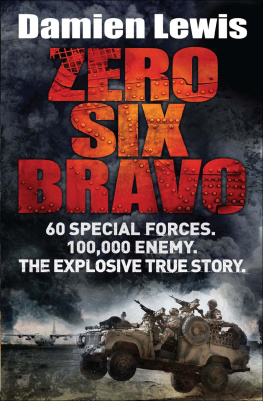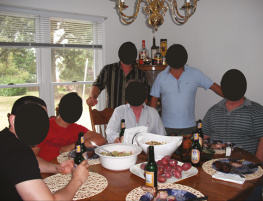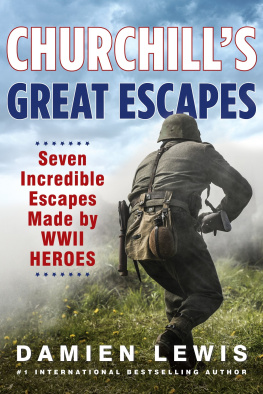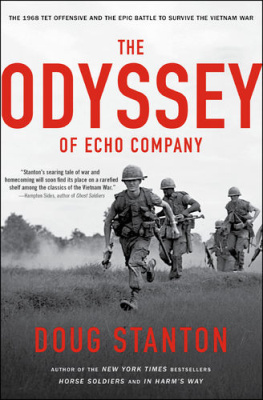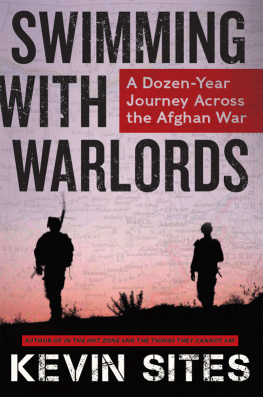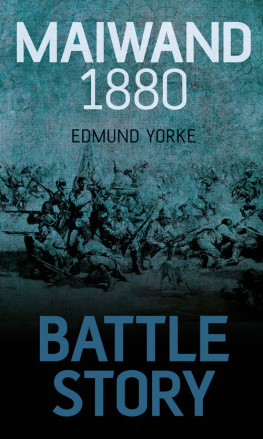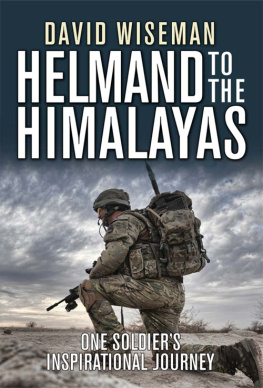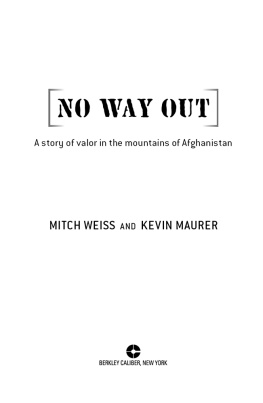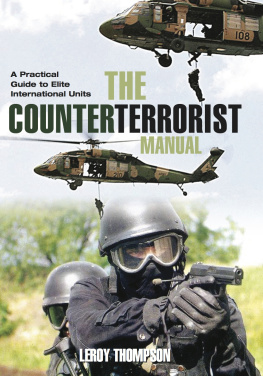
CONTENTS
About the Book
It is the winter of 2001. A terror ship is bound for Britain carrying a horrifying weapon. The British military sends a crack unit of SAS and SBS to assault the vessel before she reaches London. So begins a true story of explosive action as this band of elite warriors pursues the merchants of death from the high seas to the harsh wildlands of Afghanistan. The hunt culminates in the single greatest battle of the Afghan war, the brutal and bloody siege of an ancient mud-walled fortress crammed full of hundreds of Al Qaeda and Taliban enemy. The story follows our handful of crack fighters as they battle against impossible odds and bitter betrayal to rescue fellow soldiers trapped by a murderous enemy. Over eight days of vicious and medieval bloodshed some 500 enemy would be killed, but at the cost of dozens of British, American and allied casualties
About the Author
Damien Lewis is a journalist and documentary film maker and has spent twenty years reporting from conflict zones. He has worked for the Telegraph, the Guardian and the BBC. Slave and Operation Certain Death have both been Sunday Times bestsellers. He lives in London.
Also by Damien Lewis
Operation Certain Death
Desert Claw
Cobra Gold
For David, aka Chubbs, who as I write is one year old; and for Jess, aka Nana, who has just passed her ninetieth birthday.
ACKNOWLEDGEMENTS

Special thanks are due to the following without whom this book would not have been possible: my literary agent, Andrew Lownie, a consummate operator in the world of literary affairs and a fearless warrior on behalf of his authors; my editors, Mark Booth and Tim Andrews, for their enthusiasm and unstinting support for this story; Kate Watkins, Ron Beard, Robert Nichols, Neil Bradford et al., who make writing for Random House such an enjoyable and edifying experience; SAS Mike, for first bringing the story to my attention and alerting me to its potential as a book cheers, mate, again; Doughnut, thanks a million, you are one of the Bloody Heroes; his wife and little one, for the hospitality and putting up with our beery antics; his father-in-law, not least for the jokes; Big J, Little T and the other lads thanks a million for the obvious; my very special thanks to Johnny Spann (Sr), for sharing your sons story with me; once again Hannah Lewis, for research and all-round support, and for bravely overcoming your injuries from the 7/7 terror attacks on London; once again my father, for his comments on early drafts and for the wonderful Quinsat discovery; Keir Lewis, my big bro, for timely translations from the French; Don McClen, your comments on the manuscript and your encouragement have again been invaluable; A. J. Hogan, for casting a sharp eye over early drafts and for the constant words of support; Michael Kargbo, for the background research materials; Colonel Richard and Barbara Price, of ASA Analysis, for the insight into chemical weapons issues; Julian Perry-Robinson, of SPRU, for his expert opinion on producing a poor mans chemical weapon; Rachel Maletnlema, for being there when we needed you; my mother, for being here when you could be and your care for others allowed; Stephen OKeeffe, for finding me a place to work in peace on the edge of the world; Tim and Ellen, for the scoops, the chilli and great company during the writing; Steve Clarke, for the beer, the mountain walks, the laughs and a readers comments from the ground up; his father, John Clarke, for the military history on Afghanistan; his son, Billy Clarke, for a wildly precocious critique of the early drafts; Geoff, ex-lighthouse keeper and literary wizard, for your comments on the early drafts; Kevin yachtsman, philosopher and landlord extraordinaire, for comments on the early drafts; Sinead and Adrian, for such perceptive feedback on the early drafts and your wonderful company; Mohammed and KA, for sharing your experience of fighting in Afghanistan with me; my good friend Zeinal Abdeen, for your comments from an Arabic and Islamic perspective; and finally, Eva, my very special loving thanks to you.
Picture Credits
All photographs copyright John Smith, excepting the following:
The artists impressions used in this book showing scenes of British special forces in action at Qala-i-Janghi fort are by Niall Arden, himself an SAS officer (reserves, now retired). Niall served in 21 SAS for many years and, more recently, on clandestine operations in Iraq and elsewhere. Due to his artistic skill, Niall became one of the Regiments main informal artists painting scenes from various SAS missions including those in Sierra Leone, the Balkans and East Timor. Due to his work producing paintings commemorating those who had died in action, Niall became known by the nickname Death Pilgrim to his fellow SAS officers and men.
To see more of Nialls artwork of the events portrayed in this book go to: www.damienlewis.com
Graphics by Fast.net Business Services, www.myfast.ie
AUTHORS NOTE
This book tells of British and US special forces in action in the war in Afghanistan. Its timescale covers the first eight weeks of that conflict, and the narrative follows the exploits of a dozen British and American soldiers. The war in Afghanistan was fought largely by British and American special forces (aided by their Aussie and Kiwi counterparts), working alongside the Afghan resistance. This band of brothers consisted of British SBS and SAS troops and their US counterparts in Delta Force, the SEALs, the Special Operations Forces and the CIA. They operated in close-knit units the likes of which have rarely been seen since the Second World War. This is a story of elite forces in action in a secret conflict, a war fought in the shadows.
While fighting the al-Qaeda and Taliban (AQT) threat in the Afghan wildlands, the British and American special forces soldiers became involved in action and drama that go far beyond the ordinary. War is certainly hell, and there are hellish events portrayed in these pages. But war also has the ability to draw out extremes of human action whether that manifests itself in bestiality and mass murder, or the heroism, selflessness and the epic will to survive as portrayed in these pages. As the author of this book, I have double- and triple-checked these stories from many different sources, and I know them to be truthful and accurate portrayals of the events as they took place.
Very little has been written about the actions of the SBS and SAS in Afghanistan. Of the written accounts that do exist, much is pure fiction masquerading as fact resulting in part from the culture of secrecy that surrounds the operations of our elite units. Consequently, books of this nature are written almost exclusively from the verbal accounts of those who have taken part in the events portrayed. In this book, where there are significant sections of dialogue, this is largely recreated from the memories of those present at the time. Certain incidents written about were recorded on tape, and I have had access to those tapes during the course of researching the stories recounted herein.
Next page
